今天的内容
1.集合
1.集合【重点】
1.1为什么使用集合
集合和数组是一样的都是用来存储数据的!!!
真实的开发的时候,使用的是集合不是数组,为啥?
数组存数据:
1.数组的容量是固定的
2.数组封装的方法是比较少的。大部分需要程序员需要自己写
Java封装了集合,是一些类。咱们只需要实例化对象,调用方法即可完成一些需求。
1.2集合的架构
官方的API
interface Collection<E>: Java 集合的总接口。 Collection接口下面有两个重要的子接口: List 和Set --| List: 接口 有序集合(也称为序列 ) 特征: 存放放的数据是有序的。可以重复的。 --|--| ArrayList: 实现类,重写List和COllection所有的抽象方法。并且还有自己独有的方法 --|--| LInkedList: 实现类,重写List和COllection所有的抽象方法。并且还有自己独有的方法 --| Set: 接口 特征: 存放放的数据是无序的。不可以重复的。 --|--| HashSet: 实现类,重写Set和COllection所有的抽象方法。并且还有自己独有的方法 --|--| TreeSet: 实现类,重写Set和COllection所有的抽象方法。并且还有自己独有的方法

1.3Collection接口
学习Collection就是学习这个接口下面的方法,对象调用方法。他是接口,无法进行实例化啊
咋办?自己写一个类去实现Collection
增:boolean add(E e);添加数据到集合中boolean addAll(Collection<? extends E> c);将一个集合添加另外一个集合 删:boolean remove(Object obj);//通过元素来删除集合中的元素boolean removeAll(Collection<? extends E> c);删除两个集合中的交集。共同的元素void clear(); 清空 查:int size(); 获取集合中的元素的个数boolean contains(Object o);判断集合中是否包含一个元素boolean isEmpty();判断是否为空。为空就是true。不为空就是falseObject[] toArray();将集合转为数组。
package com.qf.a_collection;import java.util.ArrayList;
import java.util.Collection;
import java.util.Iterator;/*** description:* 公司:千锋教育* author:博哥* 公众号:Java架构栈*/public class Demo1 {public static void main(String[] args) {//Java中封装的有实现类 ArrayListCollection<String> collection = new ArrayList<>();//但是 只能使子类重写父类的那个方法,子类独有的方法不能使用!!System.out.println(collection);//[]collection.add("狗蛋");collection.add("吴彦祖");collection.add("狗蛋");collection.add("闫世达");System.out.println(collection);//[狗蛋, 吴彦祖, 闫世达]Collection<String> collection1 = new ArrayList<>();collection1.add("嘻嘻");collection1.add("哈哈");collection.addAll(collection1);//将collection1数据存到collectionSystem.out.println(collection);//[狗蛋, 吴彦祖, 闫世达, 嘻嘻, 哈哈]Collection<Integer> collection2 = new ArrayList<>();collection2.add(21);collection2.add(22);collection2.add(23);//collection.addAll(collection2);System.out.println(collection.remove("闫世达"));System.out.println(collection);//被删除以后的集合的数据System.out.println(collection.remove("闫世达"));//如被删除的元素如果没有话的,就是falsecollection.remove("狗蛋");System.out.println(collection);//[吴彦祖, 狗蛋, 嘻嘻, 哈哈]Collection<String> collection3 = new ArrayList<>();collection3.add("嘻嘻");collection3.add("呵呵");collection3.add("哈哈");collection.removeAll(collection3);System.out.println(collection);//[吴彦祖, 狗蛋]
// collection.clear();
// System.out.println(collection);//[]System.out.println(collection.size());//2System.out.println(collection.contains("狗蛋"));//trueSystem.out.println(collection.isEmpty());//false 因为不为空Object[] objects = collection.toArray();for (int i = 0; i < objects.length; i++) {System.out.println(objects[i]);}}
}1.4遍历数据
三种遍历方式:
1.使用for循环进行遍历
2.使用增强for循环遍历
3.使用迭代器进行遍历1.4.1使用for循环进行遍历
package com.qf.a_collection;import java.util.ArrayList;
import java.util.Collection;/*** description:* 公司:千锋教育* author:博哥* 公众号:Java架构栈*/
public class Demo2 {public static void main(String[] args) {Collection<Boolean> col = new ArrayList<>();col.add(true);col.add(false);col.add(true);col.add(true);System.out.println(col);Object[] objects = col.toArray();for (int i = 0; i < objects.length; i++) {System.out.println(objects[i]);}}
}1.4.2增强for循环
语法格式:
for (类型 临时变量: 遍历的数组或者集合) {sout(临时变量) }
package com.qf.a_collection;import java.util.ArrayList;
import java.util.Collection;/*** description:* 公司:千锋教育* author:博哥* 公众号:Java架构栈*/
public class Demo3 {public static void main(String[] args) {Collection<Boolean> col = new ArrayList<>();col.add(true);col.add(false);col.add(true);col.add(true);System.out.println(col);//直接写代码 iterfor (Boolean aBoolean : col) {System.out.println(aBoolean);}}
}1.4.3迭代器
也是用来遍历数据的。
package com.qf.a_collection;import java.util.ArrayList;
import java.util.Collection;
import java.util.Iterator;/*** description:* 公司:千锋教育* author:博哥* 公众号:Java架构栈*/
public class Demo4 {public static void main(String[] args) {Collection<String> collection1 = new ArrayList<>();collection1.add("嘻嘻");collection1.add("呵呵");collection1.add("哈哈");//1.先将集合变成迭代器对象Iterator<String> iterator = collection1.iterator();//iterator 这个里面还是有数据的!!!//boolean hasNext()//如果迭代具有更多元素,则返回 true 。//System.out.println(iterator.hasNext());//true//E next()//返回迭代中的下一个元素。并将光标挪到当前元素上面// [嘻嘻, 呵呵, 哈哈]// |
// System.out.println(iterator.next());//嘻嘻
// System.out.println(iterator.hasNext());//true
// System.out.println(iterator.next());//呵呵
// System.out.println(iterator.hasNext());//true
// System.out.println(iterator.next());//哈哈
// System.out.println(iterator.hasNext());//false// System.out.println(iterator.next());while (iterator.hasNext()) {System.out.println(iterator.next());}}
}总结迭代器遍历数据
1.先把集合变成迭代器对象
2.通过while循环 hasNext方法 next()
上午讲的内容
1.集合的架构Collection 父接口ListArrayList 实现类LinkedList 实现类SetHashSetTreeSet
2.Collection下面的方法addaddAllremoveclearsizeconatinstoArrayisEmpty
3.遍历集合中数据1.for循环2.增强for循环3.迭代器1.5集合中存对象【重点】
集合中存 八大基本数据类型,只能写包装类。String, 可以存自定义的对象
package com.qf.a_collection;import java.util.ArrayList;
import java.util.Collection;/*** description:* 公司:千锋教育* author:博哥* 公众号:Java架构栈*/
class Person {String name;int age;public Person (String name, int age) {this.name = name;this.age = age;}}public class Demo5 {public static void main(String[] args) {Collection<Person> collection = new ArrayList<>();collection.add(new Person("吕布", 21));collection.add(new Person("曹操", 28));collection.add(new Person("董卓", 58));System.out.println(collection);//可以存对象的//将数据遍历出来for (Person person : collection) {System.out.println(person.name + ":" + person.age);System.out.println("==========");}}
}练习:
一个集合中存的是Student对象name age 私有话。遍历 将name和age取出来
package com.qf.a_collection;import java.util.ArrayList;
import java.util.Collection;/*** description:* 公司:千锋教育* author:博哥* 公众号:Java架构栈*/
class Student {private String name;private int age;//对属性进行赋值public Student(String name, int age) {this.name = name;this.age = age;}public String getName() {return name;}public int getAge() {return age;}
}
public class Demo6 {public static void main(String[] args) {Collection<Student> stus = new ArrayList<>();stus.add(new Student("狗蛋", 21));stus.add(new Student("永杰", 25));stus.add(new Student("世奇", 83));System.out.println(stus);for (Student student : stus) {System.out.println(student.getName());System.out.println(student.getAge());}}
}1.6List集合
开发中不用Collection 一般用List。
List是一个接口,是Collection的子接口。
Collection 咱们学过方法,List接口能不能用COllection方法 为啥? 继承关系
List接口下面比Collection接口下面的方法更多!!!
讲List下面的方法,只讲List独有的。
特征 List: 存的数据是有序的,可以重复的
Collection中的方法,List肯定是有点,是继承关系,上午讲的COllection下面的方法 在List照样能用 只讲List独有方法 增:void add(int index, E e);在指定的下标的位置添加指定的元素boolean addAll(int index, Collection<? extends E> c);在指定的下标下面添加指定的集合 删:Collection下面remove 是通过元素删除的E remove(int index); 通过下标来删除元素,返回值 是被删除的那个元素 改:E set(int index, E element);通过指定的索引下标替换某一个元素。返回值是被替换的元素 查:E get(int index); 通过下标获取指定的元素int indexOf(Object o);获取指定元素的下标int lastIndexOf(Object o);获取指定元素的最后一次出现下标的List<E> subList(int fromIndex, int toIndex); 截取一个集合
package com.qf.b_list;import java.util.ArrayList;
import java.util.List;/*** description:* 公司:千锋教育* author:博哥* 公众号:Java架构栈*/
public class Demo1 {public static void main(String[] args) {List<String> list = new ArrayList<>();list.add("安徽板面加狮子头");list.add("北京烤手机");list.add("烧饼加馍馍");System.out.println(list);list.add(1, "胡辣汤");list.add("北京烤手机");System.out.println(list);List<String> list1 = new ArrayList<>();list1.add("烤肠");list1.add("大肠赤身");list1.add("蜂蜜灌大肠");list.addAll(2, list1);System.out.println(list);//[安徽板面加狮子头, 胡辣汤, 烤肠, 大肠赤身, 蜂蜜灌大肠, 北京烤手机, 烧饼加馍馍]System.out.println(list.remove(1));//删除的数据 胡辣汤System.out.println(list);//被删除之后的数据 [安徽板面加狮子头, 烤肠, 大肠赤身, 蜂蜜灌大肠, 北京烤手机, 烧饼加馍馍]System.out.println(list.set(0, "兰州拉面"));System.out.println(list);//[兰州拉面, 烤肠, 大肠赤身, 蜂蜜灌大肠, 北京烤手机, 烧饼加馍馍]System.out.println(list.get(3));System.out.println(list.indexOf("烤肠"));//1System.out.println(list.lastIndexOf("北京烤手机"));//6List<String> strings = list.subList(2, 4);//要头不要尾System.out.println(strings);}
}Collection 和List 我讲的都要记,明天默写!!!
1.7List的三种遍历方式
1.for循环
2.增强for循环
3.迭代器
1.7.1for循环和增强for循环
package com.qf.b_list;import java.util.ArrayList;
import java.util.List;/*** description:* 公司:千锋教育* author:博哥* 公众号:Java架构栈*/
public class Demo2 {public static void main(String[] args) {List<String> list = new ArrayList<>();list.add("安徽板面加狮子头");list.add("北京烤手机");list.add("烧饼加馍馍");System.out.println(list);//[安徽板面加狮子头, 北京烤手机, 烧饼加馍馍]for (int i = 0; i < list.size(); i++) {//刚好通过get方法的遍历的System.out.println(list.get(i));}System.out.println("===========");for (String s : list) {System.out.println(s);}System.out.println("---------");}
}1.7.2迭代器
package com.qf.b_list;import java.util.ArrayList;
import java.util.List;
import java.util.ListIterator;/*** description:* 公司:千锋教育* author:博哥* 公众号:Java架构栈*/
public class Demo3 {public static void main(String[] args) {List<String> list = new ArrayList<>();list.add("安徽板面加狮子头");list.add("北京烤手机");list.add("烧饼加馍馍");System.out.println(list);//[安徽板面加狮子头, 北京烤手机, 烧饼加馍馍]ListIterator<String> sli = list.listIterator();while (sli.hasNext()) {System.out.println(sli.next());}System.out.println("========");//到此位置 光标在最后while (sli.hasPrevious()) {System.out.println(sli.previousIndex());System.out.println(sli.previous());}}
}package com.qf.b_list;import java.util.ArrayList;
import java.util.List;
import java.util.ListIterator;/*** description:* 公司:千锋教育* author:博哥* 公众号:Java架构栈*/
public class Demo4 {public static void main(String[] args) {List<String> list = new ArrayList<>();list.add("安徽板面加狮子头");list.add("北京烤手机");list.add("烧饼加馍馍");ListIterator<String> stringListIterator = list.listIterator(list.size());while (stringListIterator.hasPrevious()) {System.out.println(stringListIterator.previous());}}
}1.8ArrayList类
从开发角度来讲
package com.qf.c_arrayList;import java.util.*; import java.util.List;/*** description:* 公司:千锋教育* author:博哥* 公众号:Java架构栈*/ public class Demo1 {public static void main(String[] args) {List<String> list1 = new ArrayList<>();list1.add("狗蛋");list1.add("嘻嘻");list1.add("啊哈哈");//增删改查 的方法即可} }ArrayList的底层是数组Object[]。 默认的容量是10。如果超过10会自动扩容
一旦超过10扩容是原来的1.5倍
https://blog.csdn.net/kevinmeanscool/article/details/122116738
源码:/*** Default initial capacity.*/private static final int DEFAULT_CAPACITY = 10;可以看出来 ArrayList 底层是数组/*** The array buffer into which the elements of the ArrayList are stored.* The capacity of the ArrayList is the length of this array buffer. Any* empty ArrayList with elementData == DEFAULTCAPACITY_EMPTY_ELEMENTDATA* will be expanded to DEFAULT_CAPACITY when the first element is added.存储ArrayList元素的数组缓冲区。ArrayList的容量就是这个数组缓冲区的长度。添加第一个元素时,任何elementData==DEFAULTCAPACITY_empty_elementData的空ArrayList都将扩展为DEFAULT_CAPACITY。 默认容量是10*/transient Object[] elementData; // non-private to simplify nested class access核心的add方法/*** Appends the specified element to the end of this list.*将指定的元素追加到此列表的末尾。* @param e element to be appended to this list* @return <tt>true</tt> (as specified by {@link Collection#add})*/public boolean add(E e) {//确保内部容量一个方法ensureCapacityInternal(size + 1); // Increments modCount!!elementData[size++] = e;return true;}private void ensureCapacityInternal(int minCapacity) {ensureExplicitCapacity(calculateCapacity(elementData, minCapacity));}//确保显示容量的方法private void ensureExplicitCapacity(int minCapacity) {modCount++;// overflow-conscious code //minCapacity 最小的容量//elementData.length elementData元素的长度if (minCapacity - elementData.length > 0)grow(minCapacity);}private void grow(int minCapacity) {// overflow-conscious codeint oldCapacity = elementData.length;//数组的长度//>> : 右移运算符,num >> 1,相当于num除以2// int newCapacity = oldCapacity + oldCapacity / 2; 1.5倍数int newCapacity = oldCapacity + (oldCapacity >> 1);//newCapacity 新的数组容量if (newCapacity - minCapacity < 0)newCapacity = minCapacity;if (newCapacity - MAX_ARRAY_SIZE > 0)newCapacity = hugeCapacity(minCapacity);// minCapacity is usually close to size, so this is a win:// Arrays.copyOf 数组的复制 把一个数组的内容复制到另外一个数组//elementData 原来的数组的内容//[1,2,3,4,5,6,7,8,9,0]//[1,2,3,4,5,7,6,8,9,0,0,0,0,0,0]//add(98)//[1,2,3,4,5,7,6,8,9,0,98,0,0,0,0]elementData = Arrays.copyOf(elementData, newCapacity);}
作业:
1.Collection下面的方法
2.List接口下面方法
3.遍历的方式
4.ArrayList源码
1);
//newCapacity 新的数组容量if (newCapacity - minCapacity < 0)newCapacity = minCapacity;if (newCapacity - MAX_ARRAY_SIZE > 0)newCapacity = hugeCapacity(minCapacity);// minCapacity is usually close to size, so this is a win:// Arrays.copyOf 数组的复制 把一个数组的内容复制到另外一个数组//elementData 原来的数组的内容//[1,2,3,4,5,6,7,8,9,0]//[1,2,3,4,5,7,6,8,9,0,0,0,0,0,0]//add(98)//[1,2,3,4,5,7,6,8,9,0,98,0,0,0,0]elementData = Arrays.copyOf(elementData, newCapacity); }
练习:
1.Collection下面的方法
2.List接口下面方法
3.遍历的方式
4.ArrayList源码

)
)






)









)